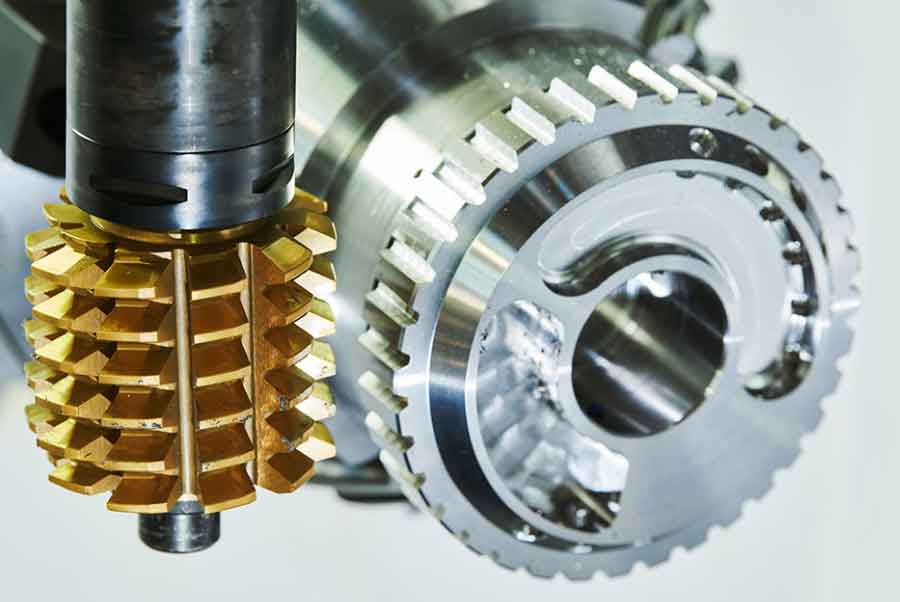
Gear hobbing is a fundamental process in gear manufacturing that unlocks precision and reliability in the production of gears. Here’s how gear hobbing achieves this:
- Accurate Tooth Profile Generation: Gear hobbing is known for its ability to generate accurate tooth profiles. The cutting tool, called a hob, is designed with precise tooth geometry that replicates the desired gear tooth shape. As the hob rotates and engages with the workpiece, it cuts the gear teeth with high precision, ensuring consistent tooth profiles and accurate tooth spacing. This precision in tooth profile generation results in smooth and efficient gear meshing, minimizing noise, vibration, and wear.
- Excellent Surface Finish: Gear hobbing produces gears with excellent surface finish. The cutting action of the hob removes material in a continuous and controlled manner, resulting in a smooth gear surface. The tooth flanks and gear surfaces produced by gear hobbing exhibit minimal roughness and irregularities, contributing to enhanced gear performance and reduced friction.
- Consistent Tooth Spacing and Pitch Diameter: Gear hobbing ensures consistent tooth spacing and pitch diameter across the entire gear. This is crucial for maintaining proper gear meshing and avoiding issues such as tooth interference or backlash. The precise synchronization between the hob and the workpiece rotation ensures uniform tooth spacing and pitch diameter throughout the gear, guaranteeing reliable and accurate gear operation.
- Repeatable and Scalable Production: Gear hobbing offers repeatable and scalable production capabilities. Once the gear hobbing machine is set up, it can produce gears consistently and accurately. The process can be easily scaled up to accommodate larger production volumes without compromising on quality or precision. This makes gear hobbing suitable for both small-scale production and high-volume manufacturing.
- Versatility in Gear Types and Sizes: Gear hobbing can manufacture a wide range of gear types and sizes. It is suitable for producing various gear configurations, including spur gears, helical gears, worm gears, and bevel gears. Gear hobbing machines can handle gears of different sizes, from small precision gears to large industrial gears. This versatility allows manufacturers to meet diverse application requirements and produce gears for various industries.
- Efficient Material Removal: Gear hobbing efficiently removes material from the workpiece, resulting in reduced production time and increased productivity. The continuous rotary motion of the hob and synchronized rotation of the workpiece enable efficient chip evacuation and smooth cutting action. Gear hobbing machines are designed to maximize material removal rates while maintaining precision, making the process time-effective and efficient.
- Proven Reliability: Gear hobbing is a well-established and widely used gear manufacturing process. It has been refined and optimized over decades, resulting in a reliable and robust method for producing high-quality gears. Manufacturers can rely on the proven track record of gear hobbing in terms of gear performance, durability, and long-term reliability.
Gear hobbing plays a pivotal role in unlocking precision and reliability in gear manufacturing. Its ability to generate accurate tooth profiles, provide excellent surface finish, maintain consistent tooth spacing, and offer repeatable production capabilities contributes to the overall performance and dependability of gears in various industrial applications.
